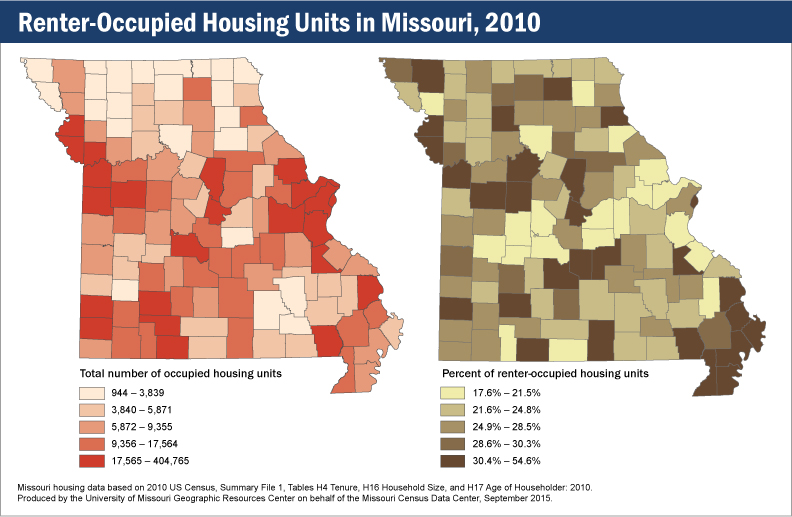August and September mark the period when university students begin their Fall semester classes. These same months also mark the period when college towns across the country see an annual influx of temporary residents. In some cases, the return of college students represents only a minor change in a town’s population. In other cases, however, the result is more dramatic, causing long-time residents and homeowners to feel outnumbered by the sudden increase in short-term occupants. Is that necessarily the case, though?
In May 2015, the US Census published a report derived from the 2013 American Housing Survey. The report examined the relationship between owner-occupied housing units and renter-occupied housing units. At the national level, owner-occupied housing units dramatically outnumbered renter-occupied housing (57.0%, compared to just 30.3%). When comparing these national numbers to Missouri’s 2010 Census figures, though, a distinctly different picture forms. All totaled, 28 of Missouri’s 115 counties beat the national percentage for renter-owned housing units. For example, according to the 2010 Census, Boone County — home to the University of Missouri — shows a much more even split between owner-occupied and renter-occupied housing units (56.1% and 43.9%, respectively). Based on the same data, St. Louis City flips the national average completely, with 45.3% of its housing units recorded as owner-occupied, compared to 54.6% recorded as renter-occupied.

